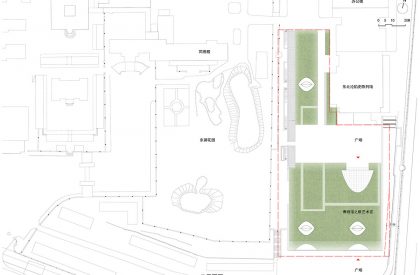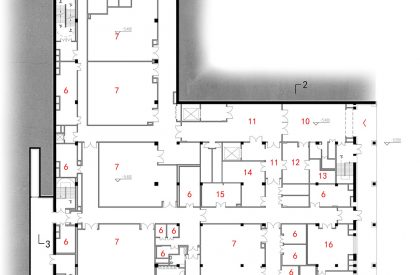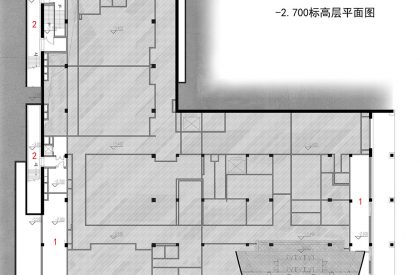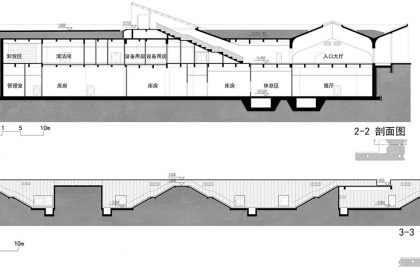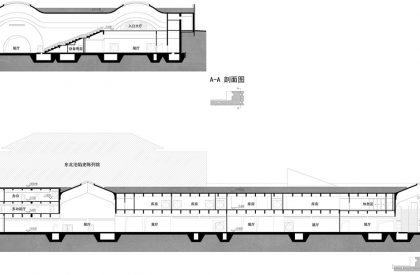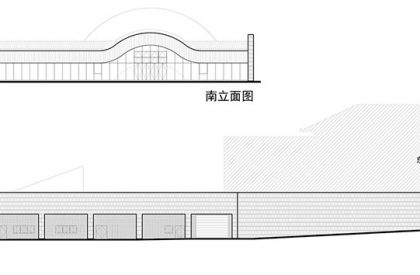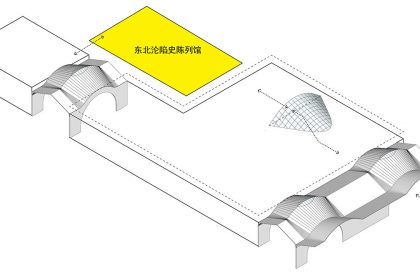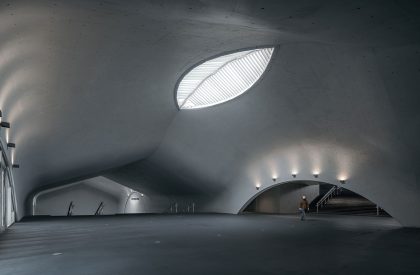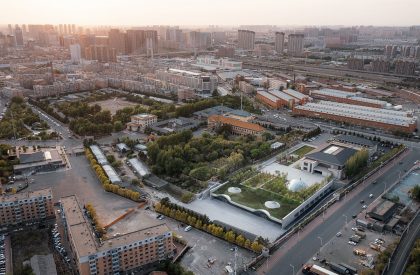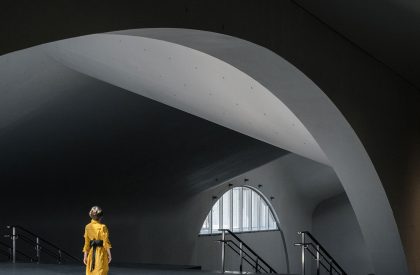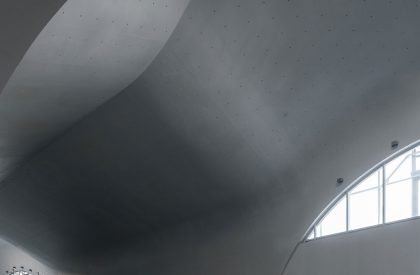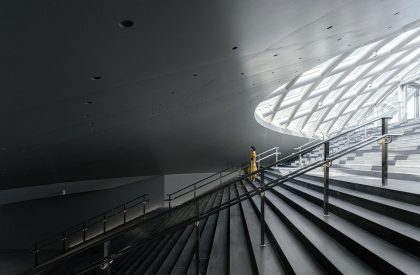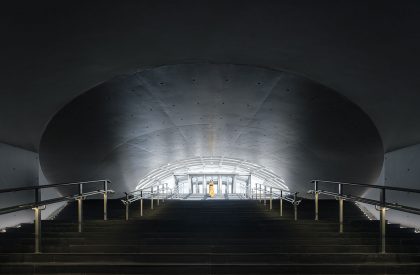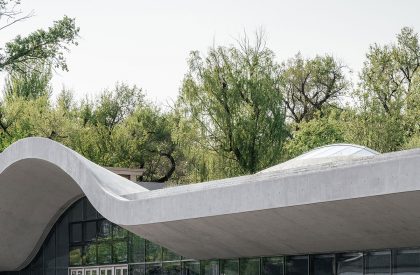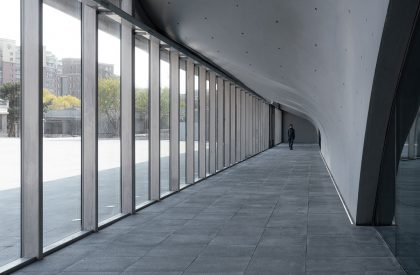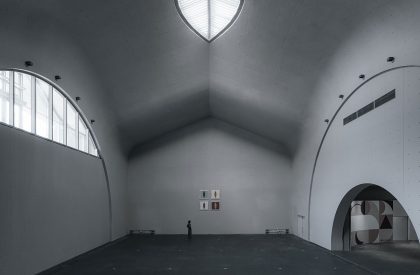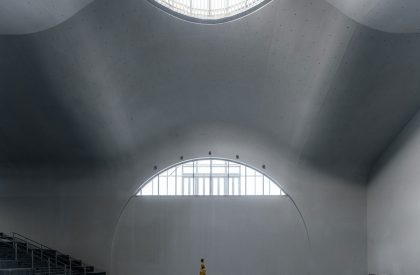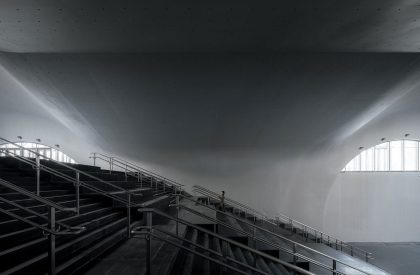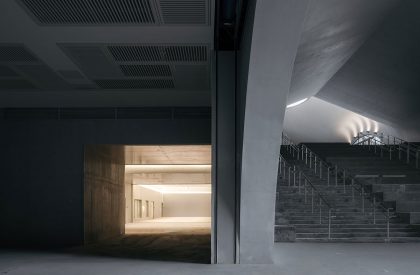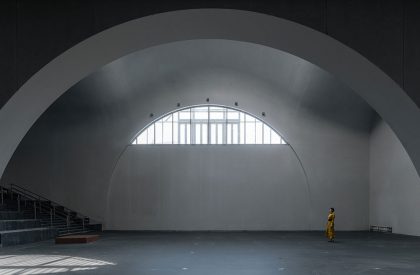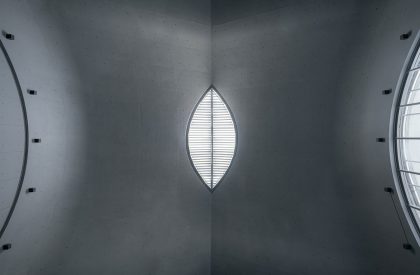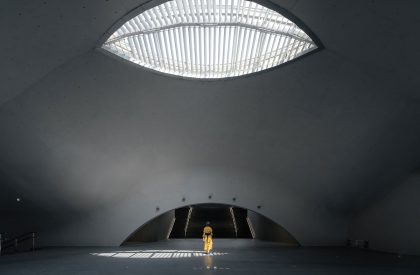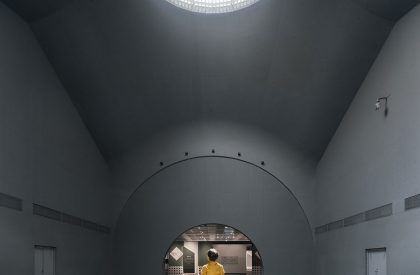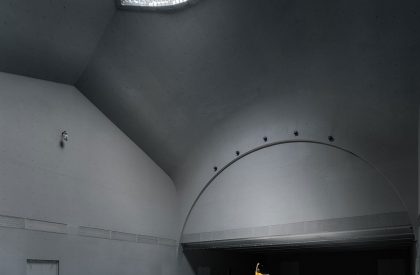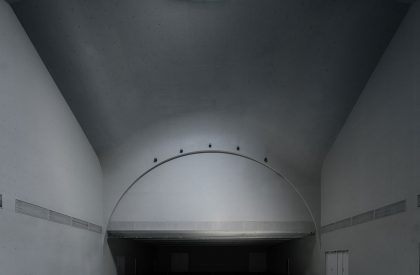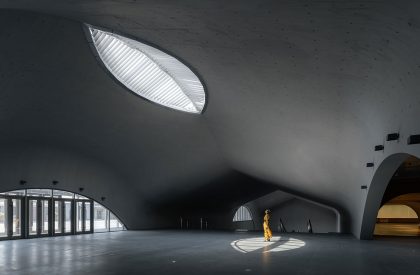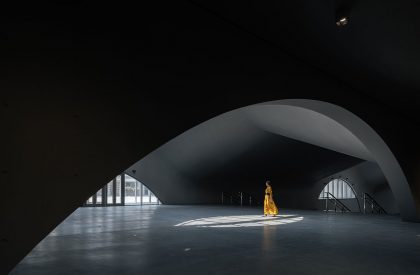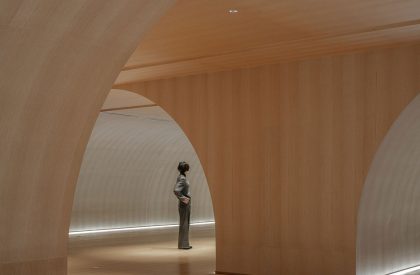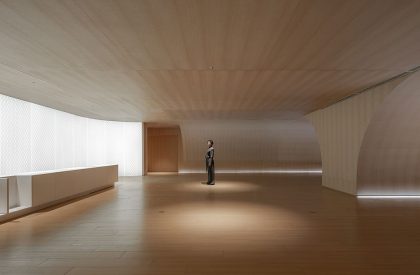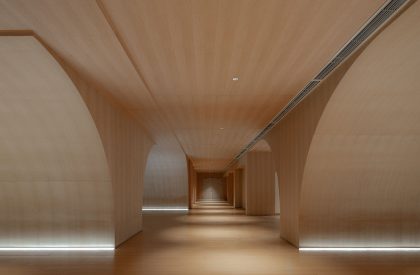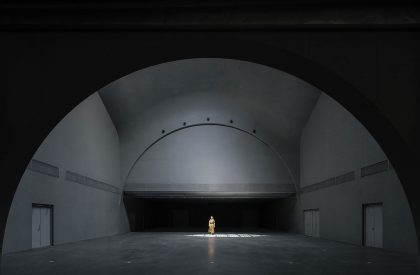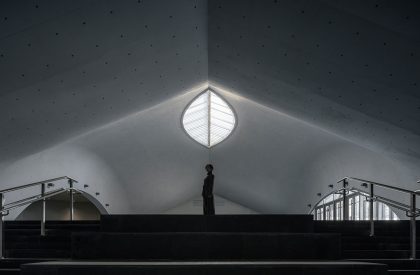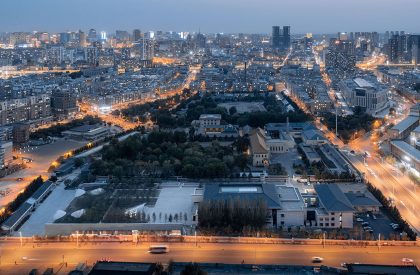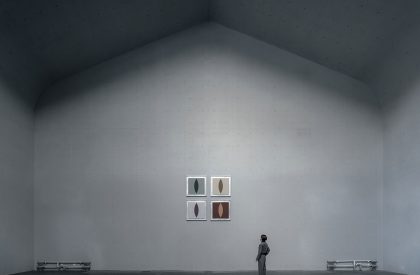Excerpt: Wutopia Lab’s Deep Time Palace is a contemporary expressionist sanctuary that doubles as an art gallery and liberates its visitors’ souls from the relentless grip of time in daily life. The goal was to start by establishing the underground structure as a “depth” reference. By introducing an enormous scale that would confuse spectators, the architect also aimed to question the conventional idea of a linear timeline.
Project Description
[Text as submitted by architect] The concrete palace designed by Wutopia Lab, namely The Eye of The Museum of the Palace Museum of the Manchurian Regime (Changchun), which is the first decorative fair-faced concrete building in Jilin Province, the largest fair-faced concrete building in Northeastern China, and the largest thin-shell large-span earth-sheltered swept surface underground building in China, was officially completed and inaugurated on May 18, 2023, International Museum Day, after six years of design and construction.
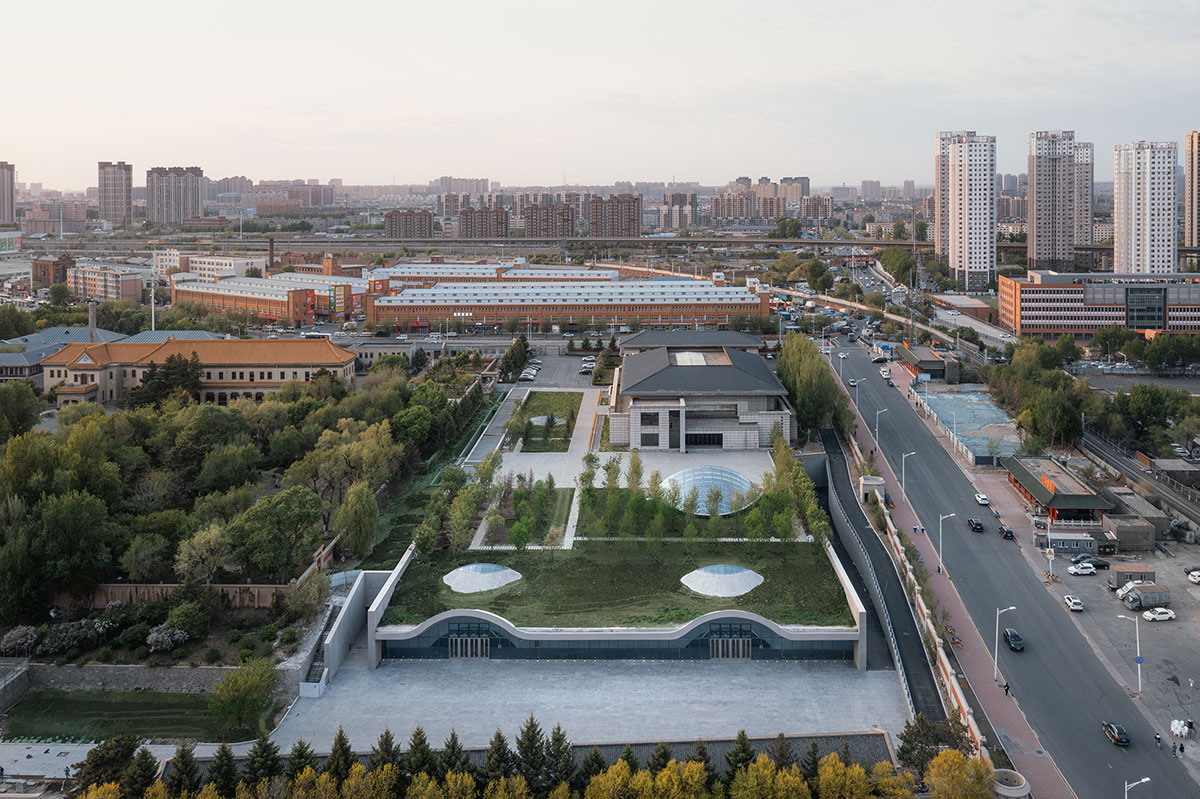
Fragments: symbols, metaphors, parallels and others: Changchun, in its bygone days, held the esteemed position of being the most developed city in East Asia. Presently, it remains a pivotal industrial center, resonating with echoes of its former grandeur. Its inherent pride radiates an unwavering optimism, refusing to surrender.
The palace of the Manchurian Regime doesn’t occupy much area, so much so that it gives an impression of a transitional palace. However, its construction exhibits meticulous attention to detail, as the grand roofs harmoniously merge Western classical elements with restrained yet exquisite ornamentations. Standing at the northeastern corner of the palace, the white Museum of the History of Northeast China Under Japanese Occupation, designed by Master Qi Kang, features a gently sloping roof that bows beneath the palace’s principal ridge.
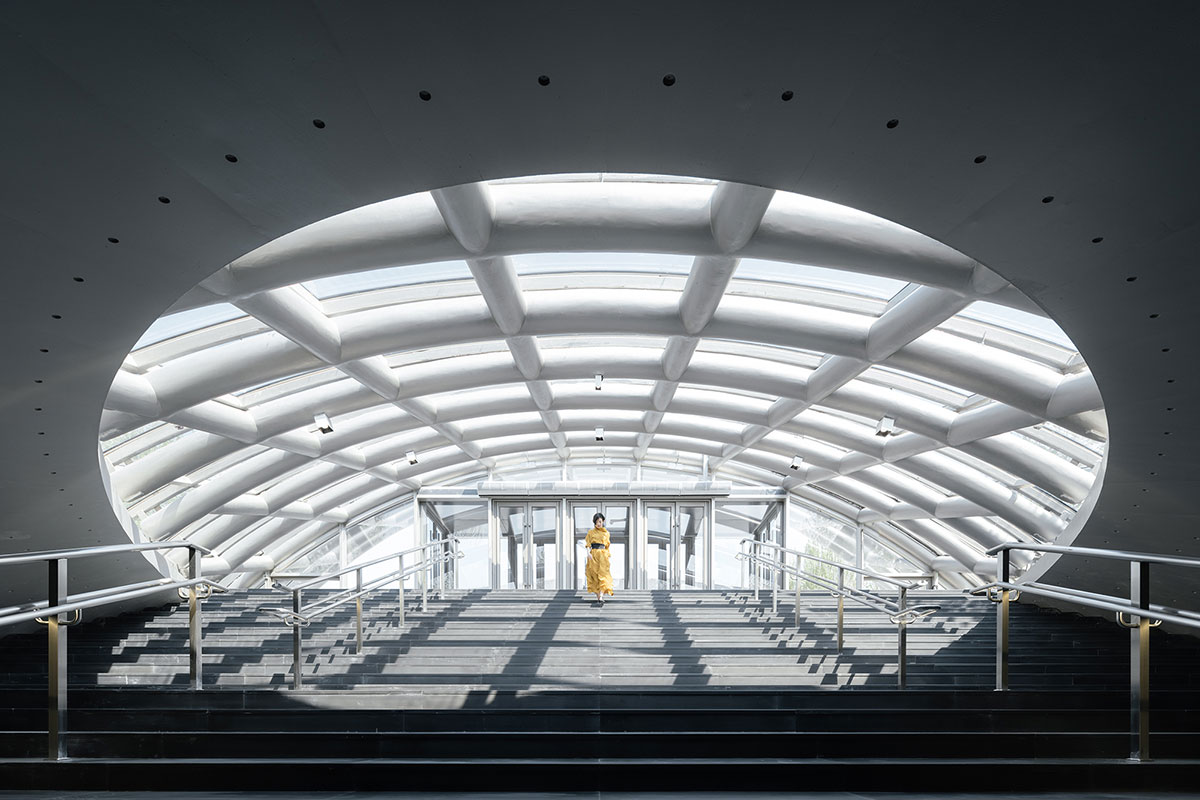
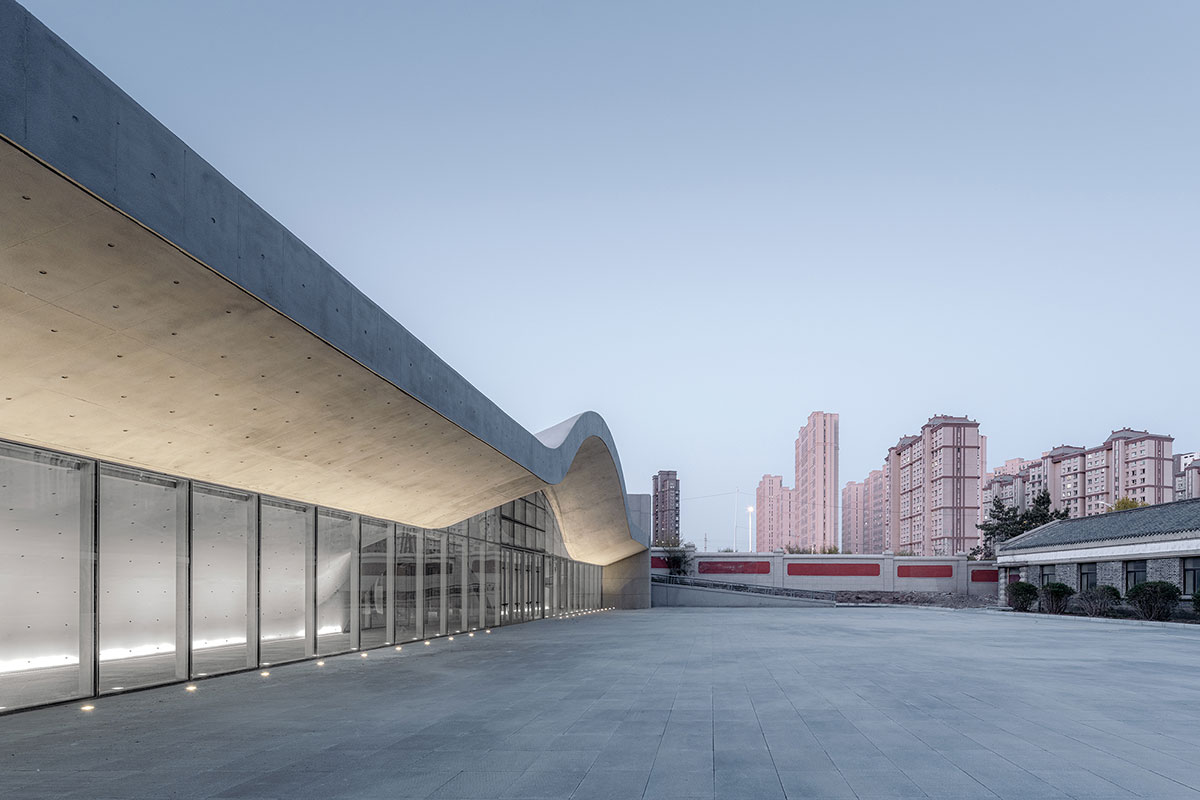
To maintain the stable landscape of the museum, the architects believed the art museum should adopt a more modest approach. With this in mind, they concealed the art museum, avoiding any alteration to the established ambiance above. Considering both the palace and exhibition hall follow conventional structures, it was decided to introduce the large-span structure commonly found in industrial buildings, creating vast interior spaces to effectively showcase the city’s inherent pride.

The designers decided to embrace elegant curves and employ a series of rhetorical devices such as symbolism, metaphor, and association to convey the resolution of the great city’s pursuit of reviving former grandeur in this new era. Simultaneously, the art museum serves as a contemporary expressionist sanctuary that liberates the visitors’ souls from the constant grip of time in daily lives, allowing the visitors to re-examine history and memory, and thereby grasp the meaning of their existences.
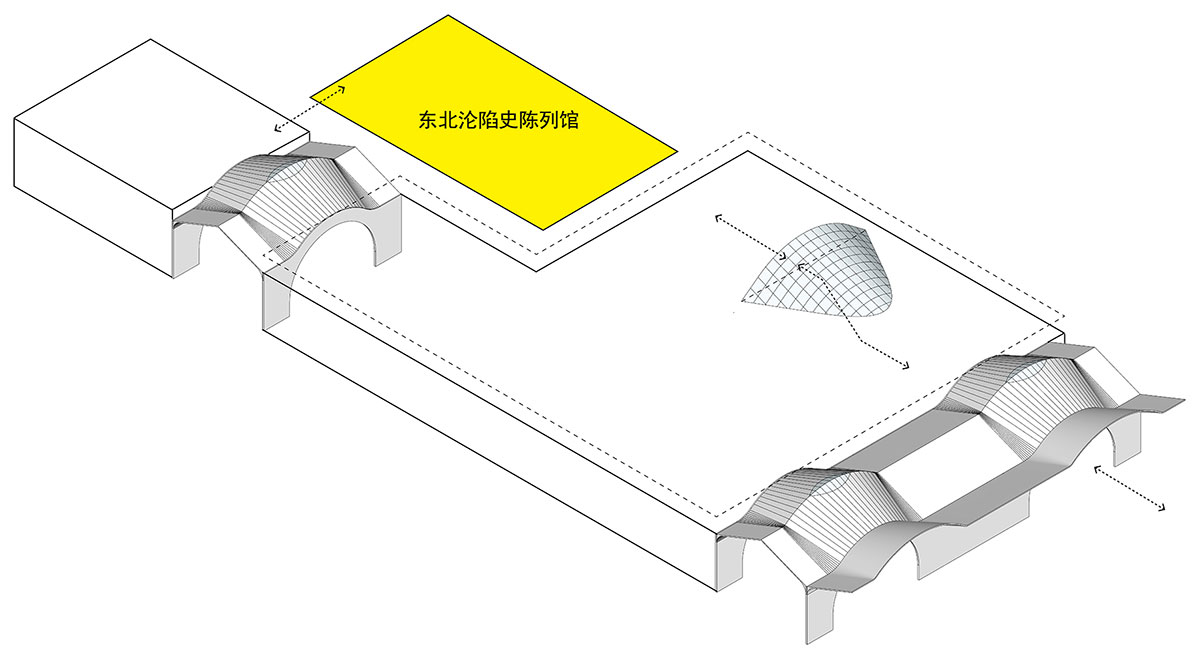

To unleash the constrained concrete with the invisible steel: The rationale for selecting fair-faced concrete was straightforward – its inherent industrial character. However, the architect’s comprehension and portrayal of fair-faced concrete pale made the decision to embark on a journey to the remote 1930s when early expressionism used to prevail, in order to liberate concrete from the confines of orderly molds. Steel was employed as formwork to shape large-span thin-shell swept surface concrete domes. In response to the concerns raised regarding the thickness of the protective coating, which could obscure the meticulously arranged panel joints, visible joints, and tie rod eyelets meticulously visualized through BIM technology, it was assured that it actually possesses considerable merit. The protective coating establishes a transparent boundary on the concrete surface, and in the presence of light, the concrete acquires a radiant halo. As lighting conditions shift, the luminescence within the halo gracefully traverses the curves, unveiling a restrained dynamism. It is an enchanting expressionism.
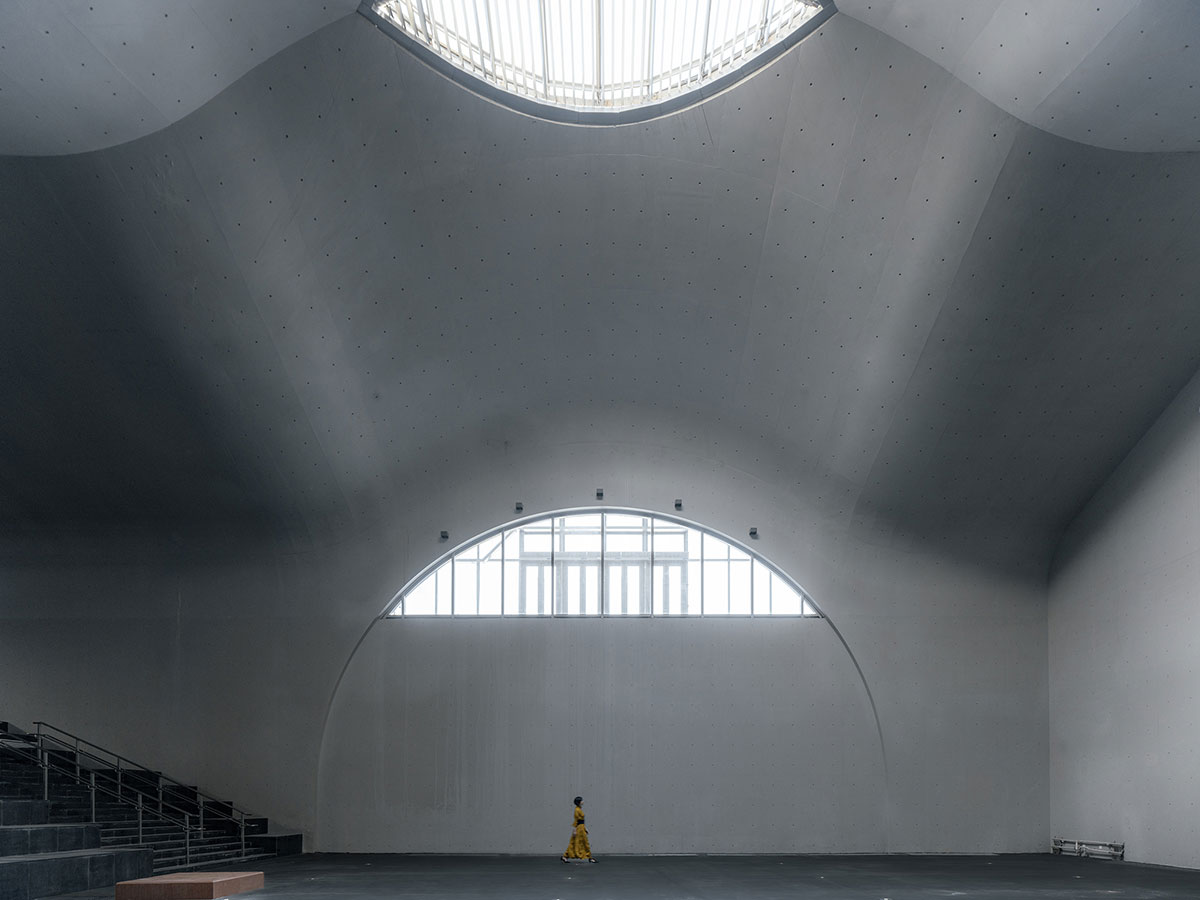


A continuously postponed timetable: The project complexity goes beyond expectation, not only because Changchun experiences frozen ground periods, which means that one-third of the construction time cannot be utilized until the structure is topped off, but also due to various unexpected work stoppages during this period. This hidden giant structure required meticulous construction process organization to achieve its final grand narrative.
The art museum is situated on a razor-shaped site between the Manchurian Regime palace complex and Museum of the History of Northeast China Under Japanese Occupation. There is a vertical differential of 7.2 meters from north to south. The gross building area is 16,650 square meters. The maximum burial depth on the northern side of the art museum reaches 17.67 meters, while at the plaza entrance on the southern side, it is 10.47 meters. The structure comprises two underground levels.
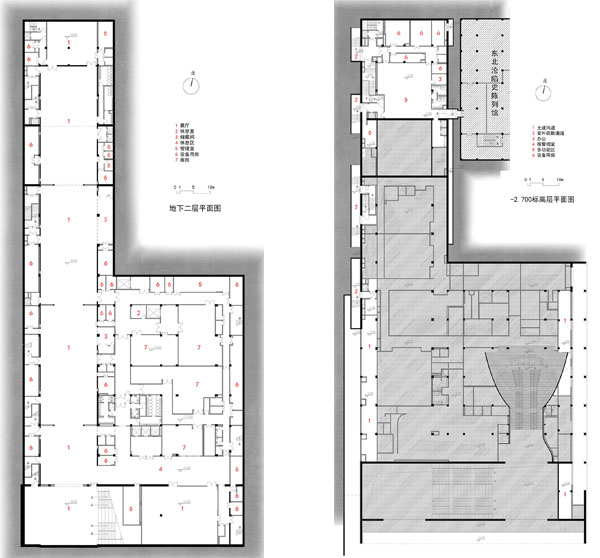
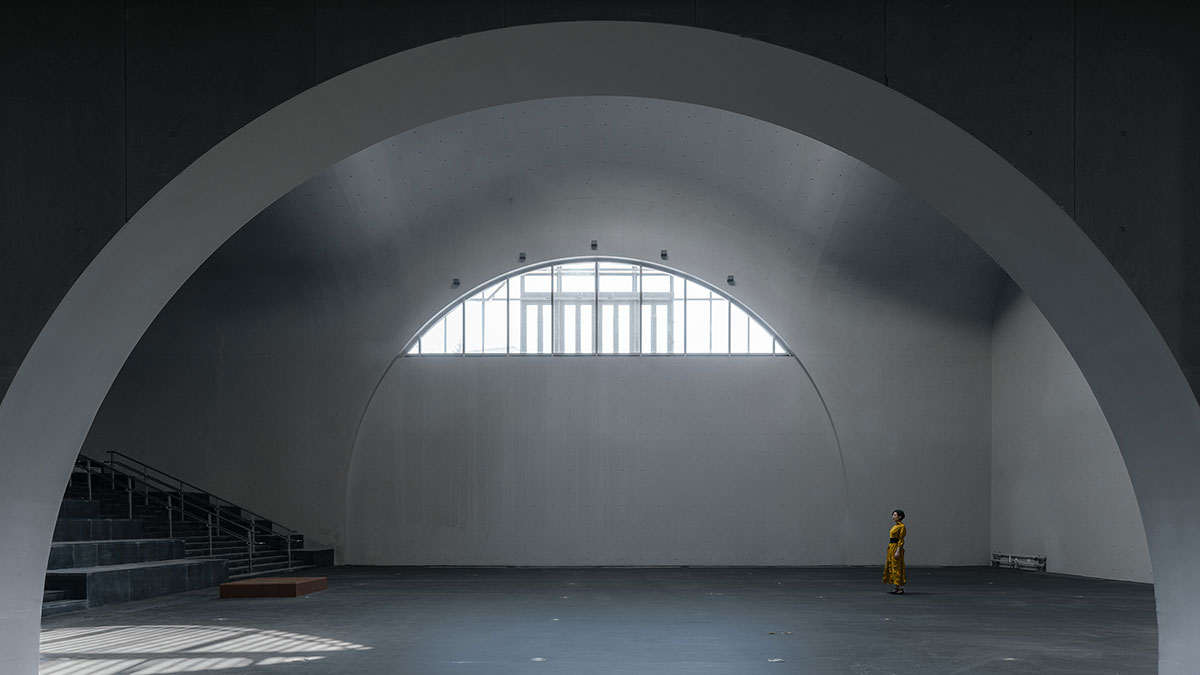
The closest distance between the deep foundation pit of the art museum and the original palace walls and fortifications is about 450mm, necessitating the installation of continuous drilled piles and tie rods. Additionally, new anchor rod static pressure piles are required to ensure balance on both sides of the exhibition hall. Moreover, a new underground passage must be constructed to establish connectivity with the basement of the exhibition hall.
The high formwork decorative fair-faced concrete spans over 10,000 square meters. Cables and pipelines required by the museum must be embedded in advance, meeting the requirements for constant temperature and humidity control, wind resistance, hazard mitigation, security, as well as fire safety. The roof of the art museum consists of a 2,000-square-meter plaza for social activities, a parking lot, and a green space.

A single-layer steel mesh shell was designed, with curved glass inserted into the ground in front of the main entrance of the exhibition hall. Going down the steps leads to the art museum’s main hall, and turning around presents the exhibition hall framed by an elegant arch-shape.
The continuous roof extends uninterrupted until it abruptly terminates at the southern plaza, where its cross-section forms the imposing facade. The vista in front of the exhibition hall’s entrance remains unobstructed, while the southern plaza imparts a sense of the earth being delicately lifted. Nonetheless, visitors would never suspect the existence of a profound underland palace within the crevices of the earth, captivating their hearts and minds.

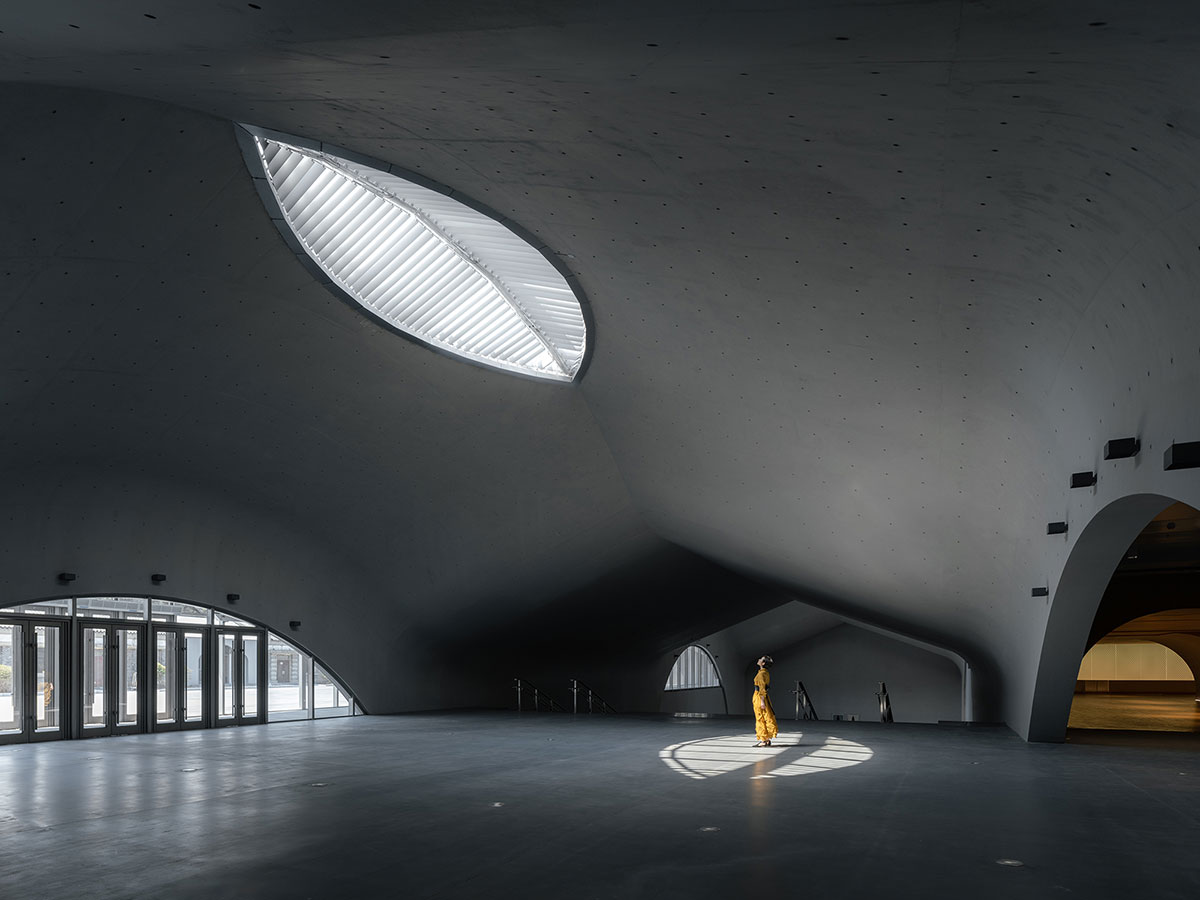
The Deep time: The word “museum” has been given new meanings way deeper than collections of art. Nowadays, museums should delve deeper into the 4.6 billion years history of Earth to search for the true meaning of life and its relativity with time. Different temporal scales give rise to different perspectives on history. This is what the architect calls “Deep Time”.

When envisioning the space, the aim was to utilize the underground structure as a starting point to convey the sense of “depth”. The architect also wanted to challenge the conventional mindset of a linear timeline by introducing an immense scale that would disorient viewers. Ultimately, central focal points were established, in the form of a wing-shaped swept surface dome as spatial nodes, 27.5m in length, 18m in width, with a peak height of 16.5m. The entire museum consists of three of these spatial nodes connected together, through which visitors are guided in understanding the intricate connections between, life, history, environment, and society in the theme of Deep Time.
As the word “introspection” is associated with eyes, it was decided to integrate skylights resembling eyes into thin-shell swept surface domes that gracefully emerge from the ground, guiding the natural light into the underground space.
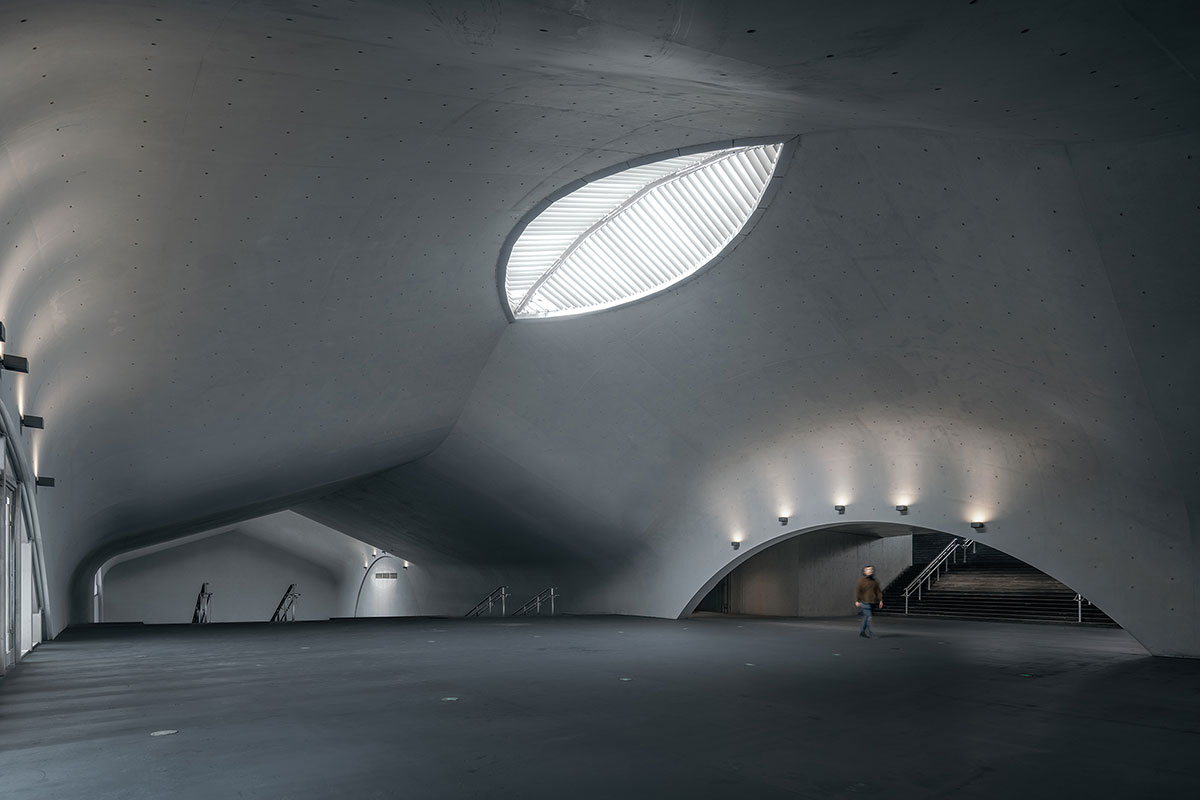
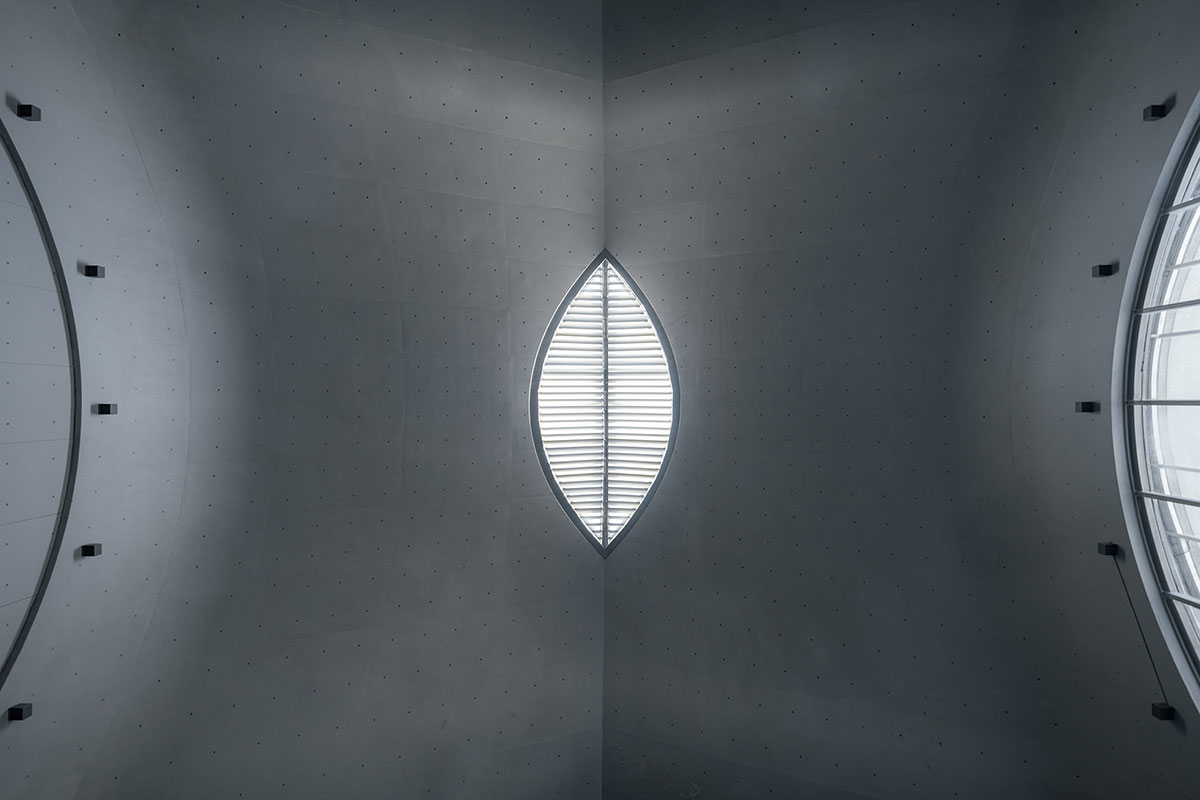
The sun beats on me: Undoubtedly, the essence of the art museum was shaped by the presence of natural light. While underground structures typically serve as refuges, the interplay of natural light uncovers the profound “depth” concealed behind the grandeur of the museum, imbuing it with a sense of spirituality and sanctity. As the visitors stand amidst these interconnected spaces, guided by the interplay of skylights, they may perceive a fleeting illusion of eternity or, perhaps, the essence of time itself. The shadows cast by natural light undergo a gradual and prolonged metamorphosis upon the ground. Initially, they may experience a hint of restlessness, then a growing compulsion. Ultimately, the captivating beauty of the light is appreciated—strange yet familiar, intangible yet enveloped within its ethereal projection.
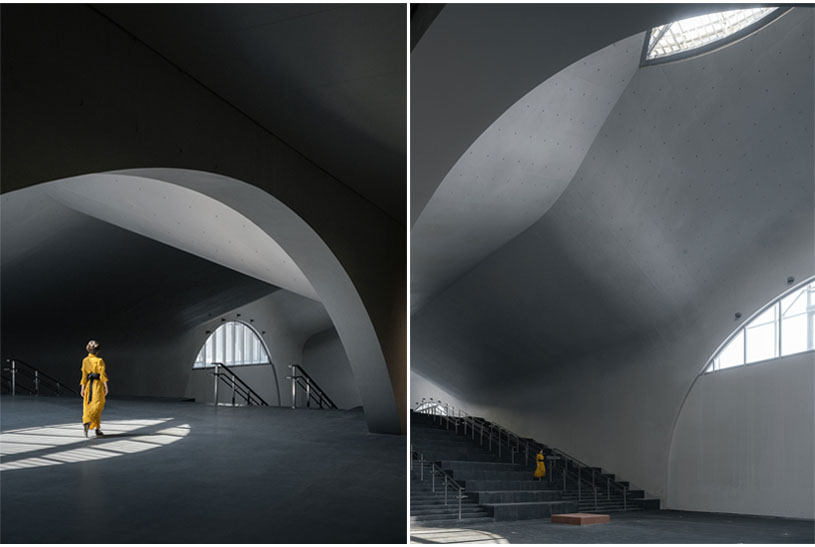
From the Underland to the Celestial: The intricate functions of the museum are concealed on either side of the main space, emphasizing the purity of the main space, which early evokes the most common perception of time – eternity. Within the subterranean natural light, in that fleeting moment of time, amidst the pursuit of the ever-shifting and distant illumination that binds the three spatial nodes, individuals may momentarily experience a semblance of eternity, though in truth it amounts to mere minutes. The Deep Palace captures this fleeting eternity within its seemingly immobile material expanse.

